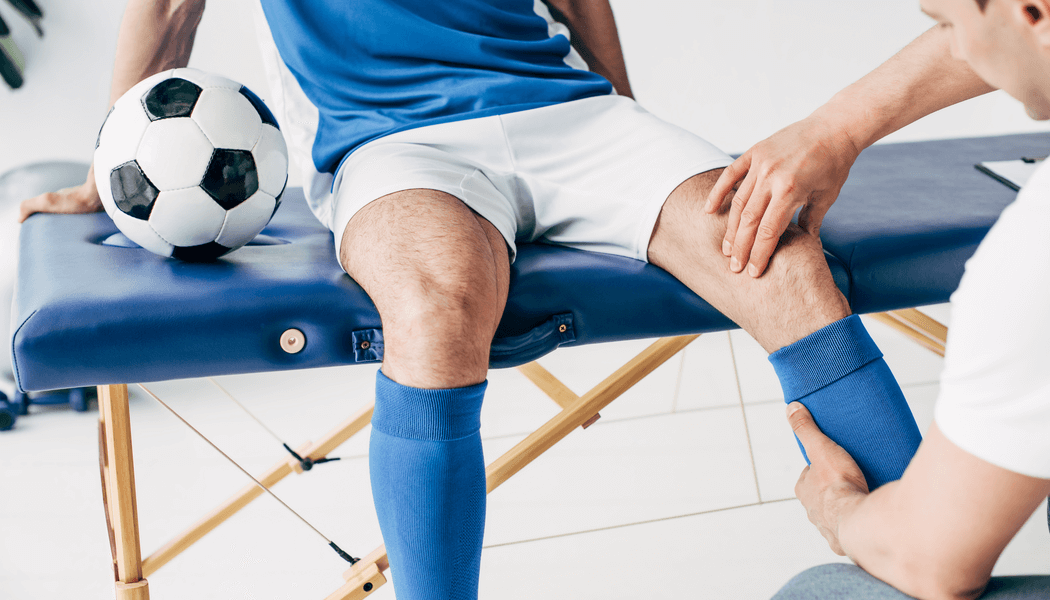Last Updated on May 19, 2024 by
Understanding Persistent Knee Pain: Causes and Treatment Options

Knee pain is one of the most common conditions that we treat at Hip to Toe. Most people will experience pain in their knees at some point in their lives. Knee pain ranges from short-term discomfort that goes away on its own to long-term severe pain that makes it hard to get on with your daily activities.
Sometimes all that is required to heal your knee pain is to rest. However, in some cases, knee pain can be persistent and it will not get better without some form of treatment. If you have already tried resting your knee and the pain still will not go away on its own, it is highly recommended that you seek treatment ASAP to avoid worsening your condition and potentially causing long-term damage to your knees.
Complications From Misdiagnosis of Knee Pain
Something we frequently see at Hip to Toe are patients who come to us for help with long-term knee pain because they have been unsuccessful at treating it on their own or elsewhere. This is sometimes due to an incorrect diagnosis of the cause of the knee pain, and sometimes due to inappropriate or ineffective treatment selection.
Correctly diagnosing the cause of your knee pain allows us to present you with appropriate treatment options to consider which will give you the highest chance of a positive outcome. This is why our initial consultation process typically requires medical imaging (such as bulk-billed X-Rays) to help us accurately diagnose your knee condition.
Contact us today if you would like to discuss how we could help you with your knee pain.
Causes of Persistent Knee Pain
There are many causes and types of knee pain, many of which you can learn about below.
Bursitis
Bursitis is one of the most common causes of knee pain that we see and treat at Hip to Toe. Bursitis is a condition that commonly occurs in the knees and hips when a small sac full of fluid (called a ‘bursa’) becomes inflamed and starts to cause pain.
Bursae (plural of bursa) are located within your body near bony areas and joints. They act as a cushion to stop your bones rubbing on muscles, tendons and skin so your joints can move smoothly.
We frequently see cases of patients with knee pain bursitis that is caused by the joints in the feet, knees and hips being misaligned in the wrong position. This prevents the joint from moving past the bursa properly and ultimately causes excess rubbing, inflammation and pain.
Correcting joint misalignment in the feet through mobilisation and manipulation along with strengthening exercises can often relieve bursitis and avoid reoccurrences.
Tendonitis
Tendonitis involves inflammation of the tendons surrounding the knee joint. Overuse or sudden, repetitive movements can lead to persistent pain, making activities like climbing stairs or walking challenging. Tendonitis and Bursitis can often result from similar causes and can sometimes present similar symptoms. It is also possible to experience a level of both at the same time. As such, the treatment options can be similar between them. Correcting joint misalignment in the feet through mobilisation and manipulation along with strengthening exercises can often relieve tendonitis and avoid reoccurrences.
Injuries
Traumatic injuries, such as ligament tears (e.g., ACL or meniscus tears) or fractures, can cause persistent knee pain. These injuries often require medical intervention, including structural podiatry, physiotherapy or surgery, for effective recovery.
You will surely agree that prevention is better than a cure when it comes to traumatic injuries such as these. In some instances, early action when you first experience knee pain can identify issues that can be resolved to prevent more-serious injuries occurring down the line.
Osteoarthritis
Another leading cause of persistent knee pain is a degenerative joint disease called osteoarthritis. Age, genetics, lifestyle and joint overuse can all contribute to the development of osteoarthritis. With time, the protective cartilage in the knee wears down, leading to pain, swelling, and stiffness.
The non-surgical treatment options for osteoarthritis start to become unsuitable once osteoarthritis becomes sufficiently progressed. Therefore, early intervention at the onset of any knee pain can help identify potential osteoarthritis sooner to give you more treatment options. This can help reduce pain and mobility issues and delay the potential need for knee surgery as much as is possible.
Rheumatoid Arthritis
In rheumatoid arthritis, which is different from osteoarthritis, the immune system mistakenly attacks the joints, leading to inflammation. One common sign is persistent knee pain, often accompanied by warmth, redness, and changes in the shape of the joint.
Treatment Options for Knee Pain
Prevention of Further Complications
Prevention is always far better than treatment. Hip to Toe have a range of options to help you prevent knee pain and injuries. By improving joint function and alignment, increasing strength and providing education on proper body mechanics, our structural podiatry and physiotherapy practitioners can help you reduce the risk of future knee complications and chronic knee pain.
Our approach goes beyond mere exercises; it encompasses a holistic approach to managing persistent knee pain based on the patient’s unique needs. The combination of manual, hands-on therapy, joint manipulation, joint re-alignment, targeted exercises and therapeutic techniques enhances your joint alignment, muscle strength and overall function contributing to a more effective and comprehensive treatment plan.
Customised Exercise Plans
As part of your treatment your practitioner will assesses your condition and design a personalised exercise plan tailored to your specific needs.
These exercises focus on mobilising, aligning and strengthening the joints, tissues and muscles in your lower limbs with the aim of providing better function for your knee. This provides increased support to the joint, reducing the strain on your knees and reducing inflammation and pain.
Improved Joint Stability
The exercises prescribed by your practitioner not only strengthen muscles but also enhance joint stability.
Improved stability contributes to better overall joint function, reducing the risk of further knee injury and enhancing your ability to perform daily activities without experiencing persistent pain.
Pain Management
The combination of exercises and therapeutic techniques help in alleviating knee pain without the need for medications, allowing you to engage more comfortably in daily activities and minimise possible side effects and expense from medications.
Lifestyle Changes
Making some changes in your daily life can also help reduce your knee pain. Keeping active and staying healthy means your whole body will work better with less aches and pains. Managing your weight if you’re overweight will also put less stress on your knee joints. Wearing the right shoes or using special inserts such as orthotics (our podiatrist can help with these if required) can sometimes make your joints work better and reduce pain.
Other Knee Pain Treatment Options
We always prefer to try the least-invasive treatment options first to maximise the benefit to our patients while minimising inconvenience, risk and expense. But sometimes patients present to us with a knee issue that is beyond our scope of treatment. In those instances we may recommend that you seek out a relevant professional to help you consider whether some of the following options might be suitable for you.
Medication
Taking medicines can help with knee pain and swelling. For example drugs called Nonsteroidal Anti-Inflammatory Drugs (NSAIDs). These can reduce pain and make swelling go down. There are also painkillers that can help you manage joint pain. You can talk to your doctor about what medicinal options may be suitable for you.
Injections
Depending on the cause and nature of your knee issue, some doctors may suggest giving you injections to help with knee pain. One kind is corticosteroid injections. They can reduce swelling. Another kind is hyaluronic acid injections. These can make your knee joint move more easily.
Surgery
If the condition of your knee is too severe to benefit from non-surgical treatment options, you might need to talk to your doctor about knee surgery. There are different types, like knee arthroscopy or joint replacement. This is when doctors replace the bad joint with a new one. It can also include fixing ligaments, which are like the strings that hold your joints together, in the instance of a severe traumatic injury.
Wrapping it Up
Persistent knee pain can have a significant impact on your daily life, but understanding the underlying causes and exploring appropriate treatment options can lead to improved quality of life.
It is essential to consult with a healthcare professional to determine the most effective course of action based on the specific cause of your knee pain and your individual health factors. Addressing persistent knee pain is a crucial step towards regaining your mobility and getting back to doing the things you love.
Contact us today if you would like to discuss how we could help you with your knee pain.



